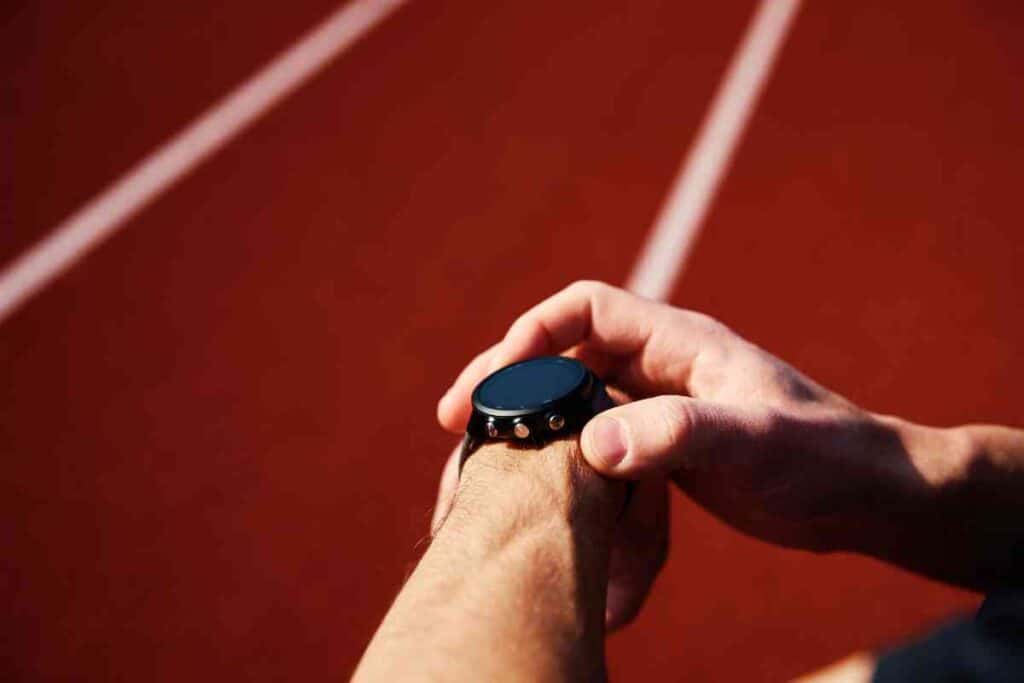Trouble Seeing Your Fitbit Screen Outside? Try Changing This Setting!
If you’ve ever taken your Fitbit outside on a sunny day, you may wonder why you can’t see my Fitbit Screen outside in the sun.

While you are researching the Fitbit, check out the Fitbit page along with bookmarking these other popular articles for future review: The Ultimate Guide To Smartwatches With Fall Detection, How to Change Fitbit Sense Weather to Fahrenheit: A Step-by-Step Guide, and Here’s Which Smartwatches Can Detect Afib (Must Read!)
Why Can’t I See My Fitbit Screen Outside?
A few Fitbit screens can be hard to see in direct sunlight because most are designed to be used indoors, as most Fitbits use an LCD screen. The LCD screen can appear washed out and difficult to read in bright sunlight. You can take several steps to make a Fitbit’s screen brighter in direct sunlight.
One way to make it easier to see your Fitbit screen in direct sunlight is to adjust the brightness settings on your device.
You can usually find the brightness settings in the menu of your Fitbit app. Simply open the app and navigate to the menu to adjust the screen’s brightness. If this option doesn’t work for you, continue reading this expert review for more tips and tricks.
Why Can’t I See My Fitbit Screen In The Sunlight?
Have you ever gone for a run on a sunny day, only to return frustrated because you couldn’t see your Fitbit screen? LCD screens, like the one on your Fitbit, work by passing light through a liquid crystal display.
This liquid crystal is sensitive to light, so the screen darkens when you reduce the backlight or step out into the sunlight.
While it might seem counterintuitive, sunlight makes it harder to see your Fitbit screen because it contains more blue light than indoor lighting.
When this blue light hits your Fitbit screen, it causes the liquid crystal molecules to twist, obstructing the backlight and making it harder for you to see the display. In fact, all LCD screens are more difficult to see in direct sunlight because of this scattering effect.
While it’s annoying not being able to see your Fitbit screen in direct sunlight, there’s actually a scientific reason behind it.
LCD screens work by passing light through a liquid crystal display, and this liquid crystal is sensitive to light—including sunlight.
So when you take your Fitbit outside on a sunny day, the blue light from the sun causes the liquid crystal molecules to twist, which obstructs the backlight and makes it harder for you to see the display.
Next time you can’t see your Fitbit in direct sunlight, remember that it’s not just you—it’s because of the power of the sun!
Which Fitbit Screen Can You See In Sunlight?

Finding the perfect Fitbit can be tricky- there are so many features and options to choose from! But don’t worry, we’re here to help.
In this blog post, we’ll be discussing the best Fitbits for reading in sunlight. We’ll also provide a brief overview of each option to help you make the best decision for your needs.
We recommend three main Fitbits for reading in sunlight: the Charge 3, the Versa 2, and the Ionic.
The Charge 3 is our top pick for a few reasons. First of all, it has an OLED display, which is automatically optimized for bright conditions like sunlight.
Secondly, the screen is large and easy to read- even if you have trouble seeing small fonts, you’ll have no problem with this one.
And finally, it’s water-resistant, so you don’t have to worry about accidentally ruining it if you get caught in a rainstorm or sweat a lot during your workout.
The Versa 2 is our next pick. It’s similar to the Charge 3 in that it has an OLED screen that is automatically optimized for sunlight.
However, one thing to keep in mind is that the screen on the Versa 2 is slightly smaller than the Charge 3. So if you have trouble seeing small fonts, this might not be your best option.
On the plus side, though, it is lighter and more comfortable to wear- perfect if you use it all day!
Our last pick is the Ionic. This one doesn’t have an OLED screen like our previous picks, but it does have a backlit LCD display that’s still easy to read in sunlight. One thing to keep in mind with this one is that the battery life isn’t as good as our other picks- but it’s still decent at around 5 days per charge.
If you’re looking for a smartwatch with a bit more battery life, we recommend sticking with the Charge 3 or the Versa 2.
All three of these Fitbits are great choices for reading in sunlight. Looking for the best of the best? Go with the Charge 3.
But if you’re looking for something lighter and more comfortable to wear, go with the Versa 2 instead. And if you’re looking for something with a bit more battery life, go with the Ionic.

How Do I Make My Fitbit Screen Visible In The Sun?
One of the great things about owning a Fitbit is tracking your activity levels and monitoring your progress no matter where you are. But what happens when you’re trying to check your stats in direct sunlight and can’t see the screen? Never fear; we’ve got some tips for you!
You can do a few things to make sure you can see your Fitbit screen when you’re out in the sun. First, try turning up the brightness on your device.
If that doesn’t work, try shielding the screen with your hand or a piece of clothing. You can also try tilting the screen at a different angle so the sun doesn’t shine directly on it. Finally, if all else fails, try moving into a shady area where the sun isn’t as strong.
How Do I Stop My Fitbit Screen From Dimming In The Sun?
Have you ever been outside on a bright, sunny day only to have your Fitbit screen become practically unusable because the brightness has dimmed so much? If so, you’re not alone.
Many Fitbit users have experienced this problem and have been wondering how to fix it. Luckily, there’s a relatively simple solution
Here’s what you need to do to stop your Fitbit screen from dimming in the sun.
The problem lies in the way that Fitbits measure ambient light. Fitbits automatically adjust their screens to conserve battery power, making them less bright in dark environments and more bright in light environments.
The solution is to change the ambient light settings in the Fitbit app. By default, Fitbits are set to “Auto-Brightness.” However, you can change this setting.
If your Fitbit screen dimmed in the sun, there’s an easy fix. All you need to do is go into the Fitbit app and change the ambient light setting from “Auto-Brightness” to “Always On.”
This will ensure that your screen stays at full brightness no matter what kind of environment you’re in, making it much easier to see in direct sunlight.
Can You See The Fitbit Sense In Sunlight?
Regarding fitness trackers, the ability to read in all kinds of lighting conditions is key. Fortunately, the new Fitbit Sense takes this into account with the always-on display that makes it easy to view during outdoor activities or while exercising outdoors.
Thanks to an advanced sunlight display mode, users can keep up with their daily stats without worrying about the sun’s glare.
The display automatically adjusts brightness levels depending on the amount of sunlight present and adjusts colors for easier reading, even in bright conditions.
Even better, Fitbit Sense’s cutting-edge technology offers higher visibility than other fitness trackers on the market. This makes it so that anyone going on a run or biking in an open park can check their goals without any issue.
And since Fitbit Sense is water and dustproof, users don’t have to worry about rain interfering with tracking. All these features make for a well rounded fitness tracker that ensures an uninterrupted experience whether indoors or out in the sun.

Can You See The Fitbit Versa In Sunlight?
With the ever-increasing popularity of fitness trackers, it’s no wonder that the Fitbit Versa is one of today’s top choices for active individuals. A lightweight and stylishly designed smartwatch, it combines all the necessary features for tracking exercise and other metrics.
Weather resistant and swim-proof, this versatile device can handle any environment you throw at it – but what about sunlight?
Knowing how your tracker will respond when exposed to direct sunlight throughout the day is important. Fortunately, the Fitbit Versa 2 is built with a “sunlight visible” display that allows you to view time and data on a bright LCD screen, even when outdoors.
Additionally, its Gorilla glass technology helps protect your device from scratches and damage from exposure to intense lighting in any setting.
In summation, whether you’re running errands in town or taking a long walk along the beach, rest assured that your Fitbit Versa will remain visible and operational in various sunlit surroundings.
More Fitbit Articles
- 2 Ways To Change Date And Time On Fitbits
- How to change weather on Fitbit Versa 3
- Fitbit Says Your Burning Too Many Calories? Solved!
- Does Fitbit Monitor Blood Pressure?
- Why Does Fitbit Say I Was Awake? Solved!
- Why does my Fitbit think I’m swimming? (ANSWERED!)
- Does Fitbit Sync With Apple Health? (Explained!)
Key Takeaways
- LCD screens on your Fitbit work by passing light through a liquid crystal display.
- This liquid crystal is sensitive to light, which is why the screen darkens.
- Fitbits for reading in sunlight: the Charge 3, the Versa 2, and the Ionic.
- You can turn up the brightness of your Fitbit screen when you’re out in the sun
- If that doesn’t work, try shielding the screen with your hand or a piece of clothing.
